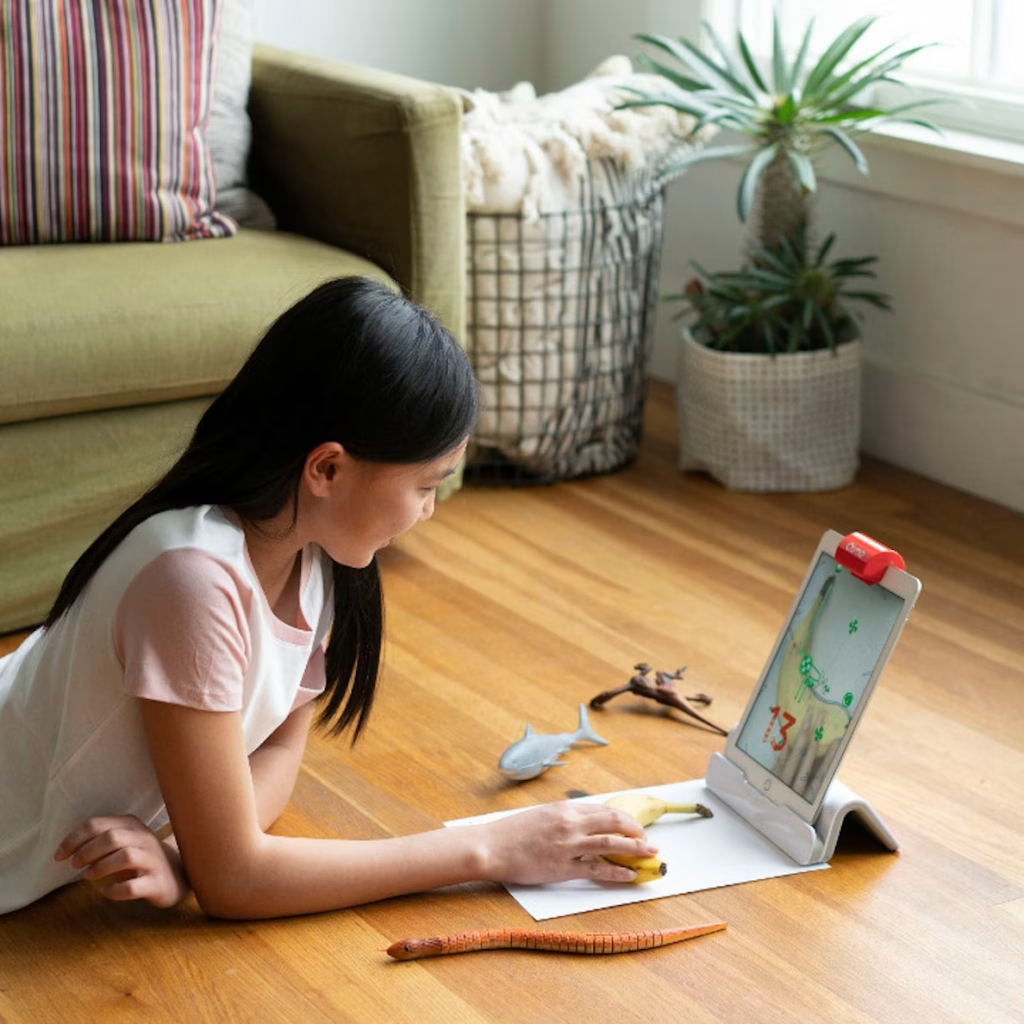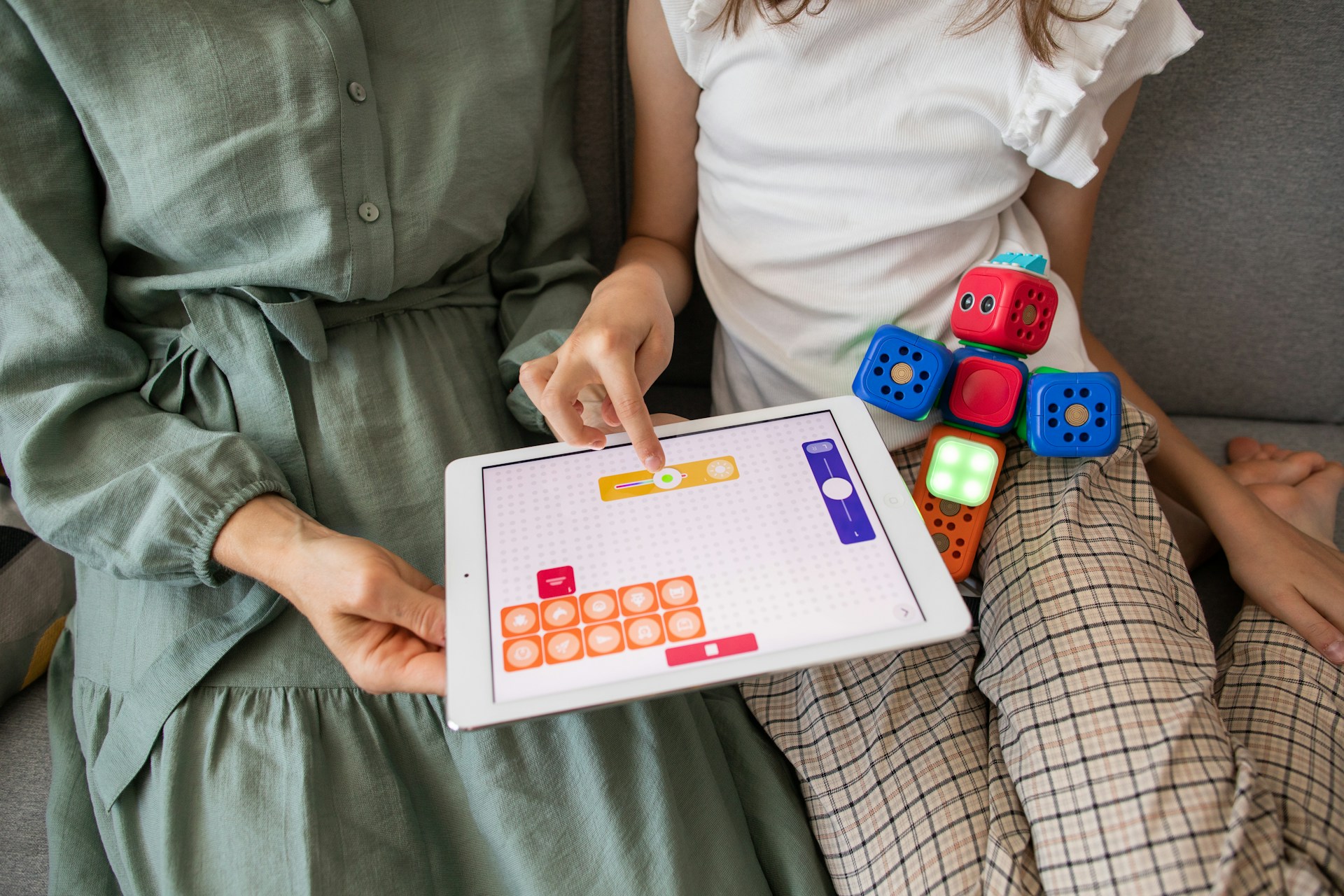In today’s digital age, screens are everywhere, and children are often captivated by the allure of digital devices. While technology offers numerous educational and entertainment opportunities, excessive screen time can have negative impacts on a child’s physical, mental, and social well-being. Managing screen time effectively is crucial to ensure that children develop healthy habits and maintain a balanced lifestyle.
One of the primary reasons for managing screen time is to prevent the adverse effects associated with excessive use. Studies have shown that too much screen time can lead to issues such as eye strain, sleep disturbances, and sedentary behavior, which in turn can contribute to obesity and other health problems. Moreover, excessive screen time can negatively impact children’s social skills and emotional development, as it often reduces the time spent on face-to-face interactions and outdoor play.
Balanced screen time, on the other hand, offers several benefits. By setting appropriate limits and encouraging alternative activities, parents can help their children develop a well-rounded lifestyle that includes physical activity, creativity, and quality family time. Properly managed screen time can also enhance educational outcomes, as children can access a wealth of learning resources and engage in interactive, educational content.
Table of Contents
- Tip 1: Set Clear Boundaries and Rules
- Tip 2: Encourage Alternative Activities
- Tip 3: Be a Role Model
- Tip 4: Create Tech-Free Zones and Times
- Tip 5: Use Technology to Your Advantage
- Final Thoughts
Tip 1: Set Clear Boundaries and Rules

Setting clear boundaries and rules is the first and perhaps most crucial step in managing your kids’ screen time. By establishing daily or weekly screen time limits, you create a structured environment that helps children understand and respect the balance between screen use and other activities.
Establishing Daily or Weekly Screen Time Limits
To start, determine how much screen time is appropriate for your child’s age and developmental stage. The American Academy of Pediatrics (AAP) provides guidelines that can help you decide on suitable limits. For instance, they recommend no more than one hour of high-quality programming per day for children aged 2 to 5, and consistent limits on screen time for older children, ensuring it does not interfere with sleep, physical activity, or other essential behaviors.
Once you’ve set these limits, be consistent in enforcing them. Use timers or alarms to signal the end of screen time, and ensure that children transition to other activities smoothly. Consistency helps children understand that screen time is a privilege with clear boundaries.
Creating a Family Media Plan
A family media plan is an effective tool for managing screen time. It outlines the rules and expectations for screen use in your household and ensures that everyone is on the same page. This plan can include:
- Screen-free times (e.g., during meals, one hour before bedtime)
- Designated screen-free zones (e.g., bedrooms, dining room)
- Approved apps and programs
- Guidelines for social media use
Involve your children in creating the family media plan. This not only makes them feel included but also increases their likelihood of adhering to the rules. Review and adjust the plan periodically to reflect your family’s evolving needs and to accommodate new technology or changes in routine.
Communicating Rules and Expectations to Children
Clear communication is key to ensuring that your children understand and follow the screen time rules. Explain the reasons behind the limits and how they benefit their health and well-being. Use age-appropriate language and examples to make your points relatable.
Be firm but understanding when enforcing the rules. If a child exceeds their screen time limit, discuss the reasons and gently remind them of the agreed-upon boundaries. Positive reinforcement can also be effective—praise and reward your children when they adhere to the rules and engage in alternative activities.
Tip 2: Encourage Alternative Activities
One of the most effective ways to manage your kids’ screen time is to encourage alternative activities that are engaging, fun, and beneficial for their overall development. By offering a variety of offline activities, you can help your children discover new interests and hobbies that don’t involve screens.
Suggesting Offline Activities
Encourage your children to engage in activities such as reading, outdoor play, and hobbies. Reading not only improves literacy skills but also stimulates imagination and critical thinking. Help your children find books that match their interests, and consider setting aside time for family reading sessions.
Outdoor play is essential for physical health and social development. Activities like biking, playing sports, and simply running around in the park can keep your kids active and help them develop social skills through interactions with peers. Organize playdates or join local sports teams to provide regular opportunities for outdoor fun.
Hobbies such as drawing, painting, building models, or playing musical instruments can also be excellent alternatives to screen time. These activities promote creativity, patience, and a sense of accomplishment. Provide your children with the necessary materials and space to explore these hobbies.
Planning Family Activities
Family activities that don’t involve screens can strengthen bonds and create lasting memories. Plan regular family outings, such as hiking, visiting museums, or going to the beach. These outings provide a change of scenery and a break from digital devices.
At home, consider activities like board games, puzzles, or cooking together. These activities encourage teamwork and communication while offering a screen-free way to spend quality time as a family. Establishing traditions, such as a weekly game night or a monthly family trip, can also be a fun way to ensure regular screen-free family time.
Providing Access to Creative and Educational Toys
Stock your home with a variety of creative and educational toys that can captivate your children’s interest. Building blocks, puzzles, art supplies, and science kits are great options that stimulate learning and creativity.
Rotate toys regularly to keep things fresh and exciting. Create designated play areas where children can easily access these toys and feel inspired to play. Encourage your kids to use their imagination and explore different ways to play with the same toys, fostering creativity and problem-solving skills.
By encouraging a range of offline activities, planning engaging family outings, and providing access to creative and educational toys, you can effectively manage your kids’ screen time while helping them develop a diverse set of interests and skills.
Tip 3: Be a Role Model
Children often learn by observing their parents, so it’s crucial to demonstrate healthy screen habits yourself. By modeling the behavior you want to see in your kids, you can significantly influence their attitudes toward screen time and encourage them to adopt balanced and mindful usage.
Demonstrating Healthy Screen Habits as Parents
Start by assessing your own screen habits and making necessary adjustments. Set clear boundaries for your screen time, just as you do for your children. Show that you prioritize other activities, such as reading, exercising, and spending time outdoors. This not only sets a positive example but also reinforces the idea that screen time should be balanced with other aspects of life.
Limiting Your Own Screen Time in Front of Children
Be mindful of your screen usage when your children are around. Avoid using screens during family meals, conversations, or while engaging in activities with your kids. By limiting your own screen time in their presence, you demonstrate that face-to-face interactions and shared experiences are more important than digital distractions.
Additionally, be conscious of the content you consume. Avoid watching inappropriate shows or browsing content that isn’t suitable for your children. Instead, choose age-appropriate content that can be educational or entertaining for the whole family.
Engaging in Screen-Free Activities Together
One of the best ways to reinforce healthy screen habits is to engage in screen-free activities together. Spend quality time with your children doing activities that don’t involve screens, such as playing board games, cooking, gardening, or going for walks. These shared experiences strengthen family bonds and create positive memories without the need for digital devices.
Encourage family rituals that promote screen-free time, such as reading bedtime stories, having regular family game nights, or doing weekend crafts. These activities not only provide a break from screens but also foster creativity, communication, and collaboration.
By being a role model, limiting your own screen time in front of your children, and actively participating in screen-free activities together, you can effectively guide your kids toward developing healthy screen habits. Your actions will show them the value of a balanced lifestyle and the importance of engaging in meaningful, non-digital experiences.
Tip 4: Create Tech-Free Zones and Times
Creating tech-free zones and times in your household can significantly help manage your kids’ screen time and foster healthier habits. By establishing specific areas and periods where screens are off-limits, you encourage your children to engage in other activities and promote better overall well-being.
Designating Certain Areas in the House as Screen-Free
Identify areas in your home where screens will not be allowed, such as bedrooms and the dining room. The bedroom should be a place for rest and relaxation, free from the distractions of screens. Removing screens from the bedroom helps promote better sleep hygiene and reduces the temptation for late-night screen use.
The dining room is another excellent place for a tech-free zone. Mealtimes should be focused on family interactions and conversations. By making the dining room screen-free, you create an environment that encourages meaningful family connections and ensures that everyone is present and engaged during meals.
Consider extending this concept to other areas where screens might interfere with daily routines or family interactions, such as the living room during certain times or outdoor spaces where physical activity is encouraged.
Setting Specific Times of the Day for No Screens
Establish specific times of the day when screens are off-limits, such as during meals and the hour before bedtime. Screen-free meals ensure that everyone is fully present and can participate in conversations and share their day’s experiences. This practice fosters stronger family bonds and better communication.
The hour before bedtime should also be a screen-free period. Exposure to screens before sleep can interfere with the production of melatonin, a hormone that regulates sleep. By avoiding screens during this time, you help your children wind down and prepare for a restful night’s sleep. Encourage relaxing activities like reading, drawing, or listening to calming music as alternatives.
Encouraging Tech-Free Family Gatherings
Family gatherings and activities should be opportunities for bonding and creating lasting memories, free from the distractions of technology. Plan regular tech-free family events, such as game nights, picnics, or outdoor adventures. These gatherings provide a break from screens and allow everyone to focus on enjoying each other’s company and engaging in fun, interactive activities.
During these events, emphasize the importance of being present and fully engaged. Encourage everyone to put away their devices and participate in the planned activities. Over time, these tech-free gatherings can become cherished family traditions that everyone looks forward to.
Tip 5: Use Technology to Your Advantage

While it’s important to limit screen time, technology itself is not inherently bad. When used wisely, it can be a powerful tool for learning and creativity. By leveraging technology to your advantage, you can ensure that your kids benefit from its positive aspects while still maintaining a healthy balance.
Utilizing Parental Controls and Monitoring Apps
Parental controls and monitoring apps are valuable tools that help you manage and supervise your child’s screen time. These tools allow you to set limits on usage, block inappropriate content, and monitor your child’s online activities. Popular parental control apps include Qustodio, Net Nanny, and Family Link.
By setting up parental controls, you can create a safer online environment for your children. You can restrict access to specific websites, apps, and games, ensuring that your kids only engage with age-appropriate content. Monitoring apps also provide insights into your child’s screen time habits, helping you identify areas where adjustments might be needed.
Selecting Educational and Age-Appropriate Content
Not all screen time is created equal. By carefully selecting educational and age-appropriate content, you can turn screen time into a valuable learning experience. There are numerous apps, websites, and programs designed to educate and inspire children.
Look for content that aligns with your child’s interests and developmental stage. Educational apps like Khan Academy, ABCmouse, and Duolingo offer interactive lessons in various subjects, from math and science to languages and art. Additionally, streaming services often provide educational programs and documentaries that can supplement your child’s learning.
Encourage your children to explore apps and websites that promote creativity and critical thinking. Coding platforms like Scratch, art and music creation apps, and interactive science experiments can all be excellent choices that combine fun and learning.
Encouraging the Use of Technology for Learning and Creativity
Encourage your children to use technology as a tool for learning and creativity, rather than just passive consumption. Set aside time for activities that require active participation and problem-solving.
For example, introduce your kids to coding through platforms like Tynker or Code.org. These resources teach programming skills in a fun and engaging way, helping children develop logical thinking and problem-solving abilities. Similarly, apps for drawing, music composition, and video editing can inspire your kids to create their own digital art, music, or films.
Promote the use of technology to explore new interests and hobbies. Virtual field trips, online classes, and interactive workshops can provide opportunities for your children to learn about topics that may not be covered in school. Encourage them to research projects, conduct experiments, and share their findings with the family.
Final Thoughts
Managing your kids’ screen time is essential in today’s digital world, where screens are a ubiquitous part of daily life. By setting clear boundaries and rules, encouraging alternative activities, being a role model, creating tech-free zones and times, and using technology to your advantage, you can help your children develop a balanced and healthy relationship with screens.
The importance of managing screen time cannot be overstated. Excessive screen use can lead to various physical, mental, and social issues, but with the right strategies, you can mitigate these risks and ensure your children benefit from technology without becoming overly dependent on it.
Implementing the tips discussed in this blog can lead to a healthier balance in your household. Encourage your children to explore the world beyond screens, engage in creative and educational activities, and enjoy meaningful family interactions. By doing so, you set the foundation for habits that will serve them well throughout their lives.
Fostering a positive relationship with technology is about balance and mindful usage. Teach your children that while screens can be a source of knowledge and entertainment, they should also appreciate the value of offline experiences. With your guidance, they can learn to use technology responsibly and enjoy a well-rounded life.
Incorporate these tips into your daily routine and watch as your family finds a harmonious balance between screen time and other enriching activities. Your proactive approach will not only benefit your children’s development but also strengthen family bonds and create a more fulfilling home environment.

